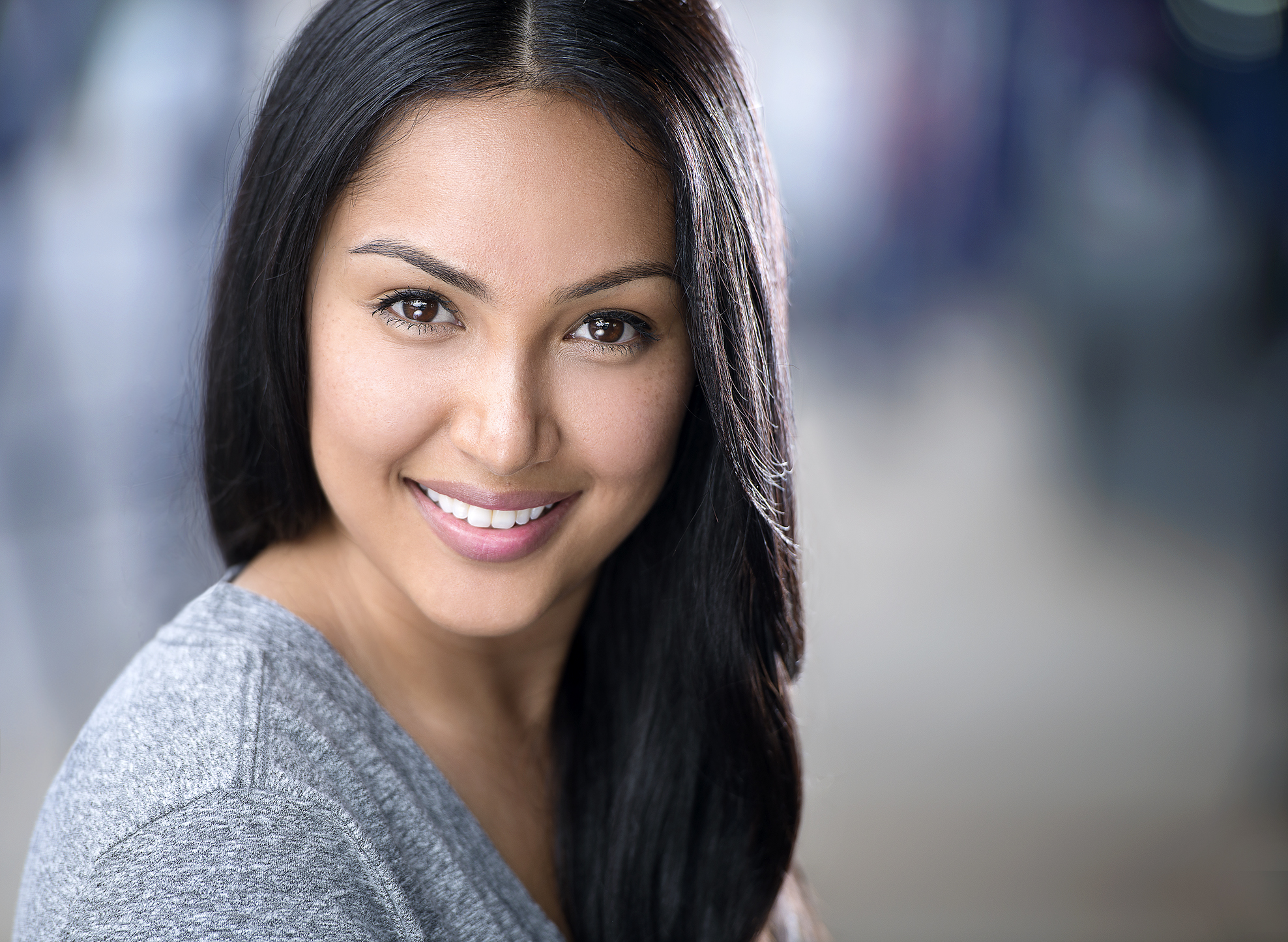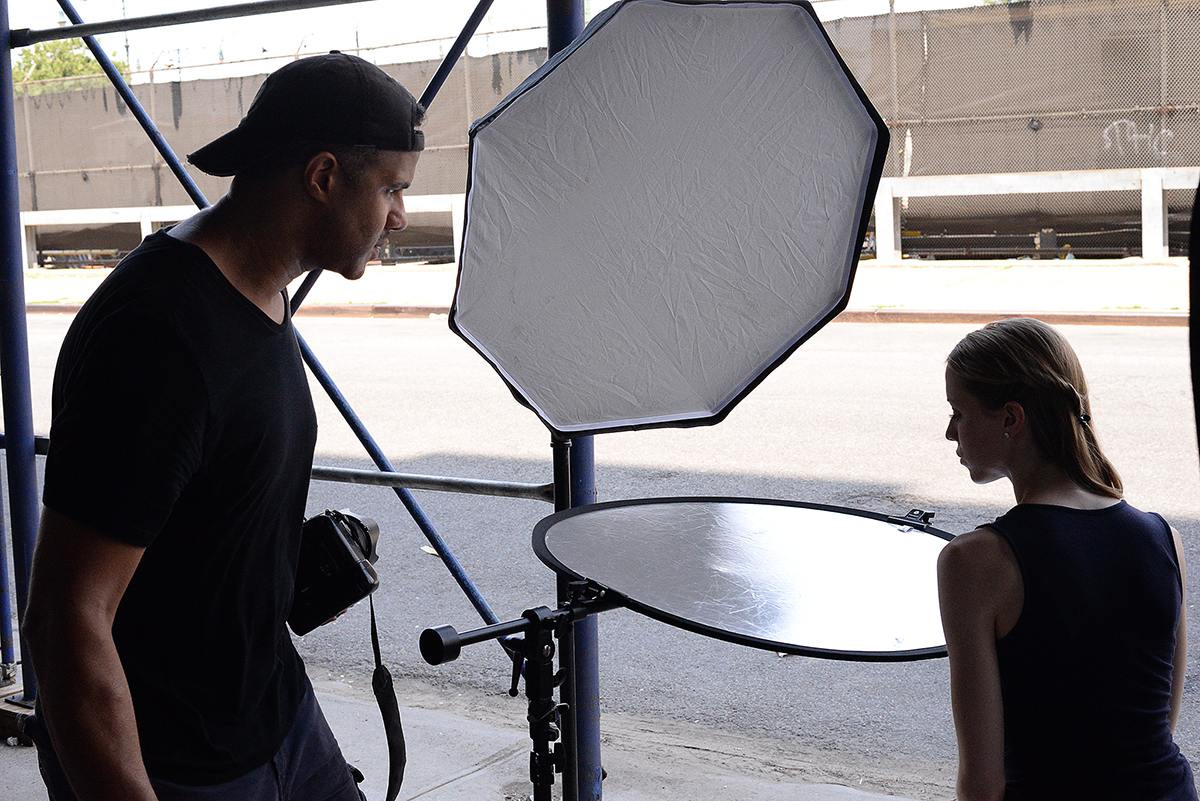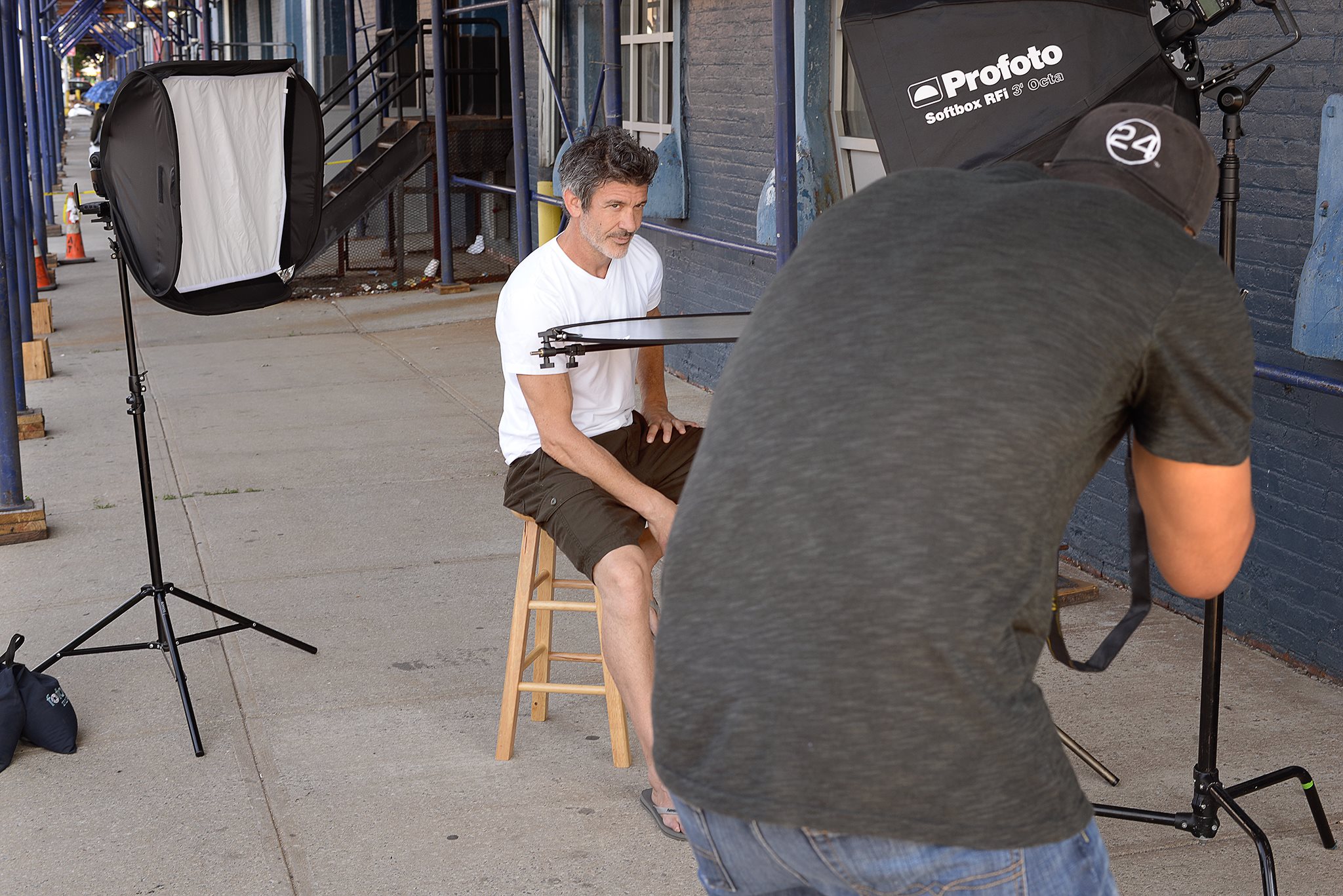Samona
I want to take a quick minute to discuss a few things when it comes to positioning of a subject for a headshot. So by now, if you're familiar with my work, you see that I shoot everything landscape orientation and I tend to shoot very tight. As I primarily shoot actors, I like my headshots to look like close up television or film stills. Television and film of course is all about action. But how do you create or convey action in a still image like a headshot? Well, it's all about avoiding "pose" per se and focusing on what I call the "poised position!" If you look at the shot above, she looks as if she's about ready to spring into action as opposed to just standing there in a nice pose looking gorgeous. The slight lean forward and position of her shoulders suggest that she's coming at you and engaged with you. This is what's most critical for me when shooting a headshot. Casting directors and the like will go through god knows how many headshots on a daily basis. What I want is for them to get to my clients shots and feel as if the actor is coming toward them. I have seen many headshots out there that more or less look like modeling shots and the focus tends to be on the pose and capturing the clients good looks. I'm guilty of having some shots like that in my portfolio as well. While we most certainly want to capture the look and personality of a client, it's really important to not forget that within that tiny fraction of a second that someone looks at the photo, they need to see more than just....a pretty picture. A headshot needs to grab attention and pull someone in. A headshot for an actor needs to get them work on television, in film or theater and all three are mediums of action.
In addition to the actual pose, the expression needs to convey action as well. How is that done? Simply by having your subjects truly interacting with you and creating the action. Try this experiment - Have a conversation with someone and just notice how their face looks and changes as you speak. You'll notice the slight changes and movement in their eyes, eyebrows and mouth as they listen to you. They're "in action" as they listen to you. (assuming of course you're not boring them with a cat story or some kind!) They're interested in what you're saying and even if not genuinely interested, they're hopefully at least trying to "look" interested. Besides that, many people are just waiting for their turn to actually speak which naturally puts them in the "poised" mode mentally which eventually translates to their physical expression. Sometimes it's subtle and sometimes, it's very obvious that they can't wait to chime in and speak their mind. This is basically what you want to work toward in your headshots. Each shot should almost look as if the subject has something to say, something to offer and something worth finding out about. There are of course many different types of expressions/emotions to convey but which ones you're going for will be determined by the goal of the shot.
The combination of a really genuine and interesting facial expression with just the right amount of lean in toward camera can make all the difference in your clients getting looked at with consideration or being tossed aside with all the other...pretty pictures.
If you want to know more about positioning your subjects in headshots and some more on expression, feel free to visit my Facebook page and leave me a message.






